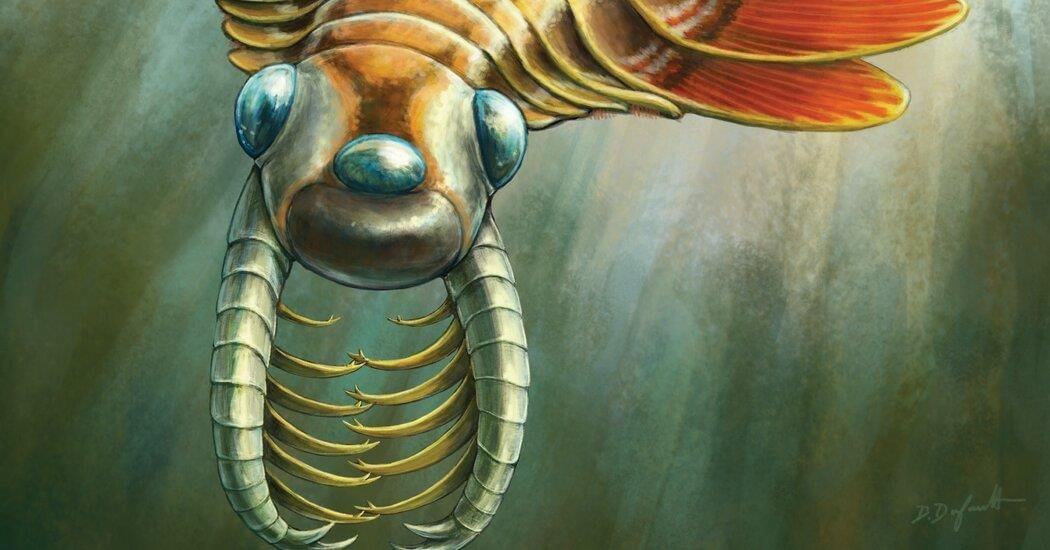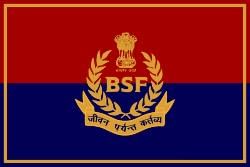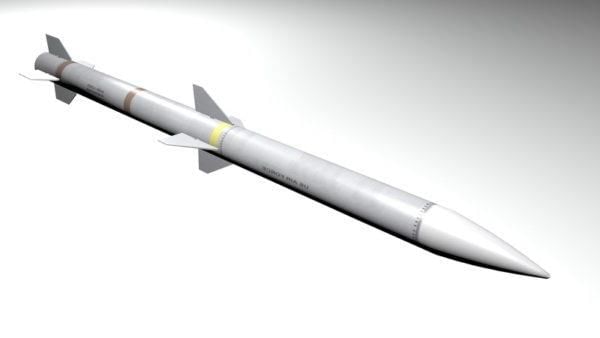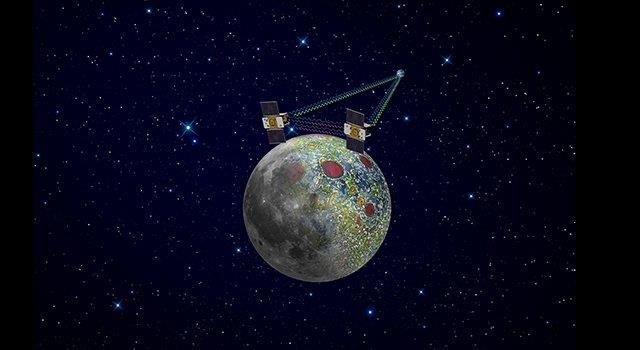UPSC Daily Current Affairs: 18th May 2025 | Current Affairs & Hindu Analysis: Daily, Weekly & Monthly PDF Download
GS3/Science and Technology
Mosura Fentoni: The Three-Eyed Predator of the Cambrian Period
 Why in News?
Why in News?
Recently, scientists have described an intriguing ancient species named Mosura fentoni, which existed approximately 506 million years ago. This discovery sheds light on the diversity and evolutionary history of early marine predators.
Key Takeaways
- Time Period: Lived around 506 million years ago, during the Cambrian period.
- Classification: An extinct species of radiodont, related to early arthropods.
- Distinct Features: Notable for having three eyes and a unique body structure.
Additional Details
- Fossil Discovery: The fossils of Mosura fentoni were primarily found in the Burgess Shale of the Canadian Rockies, a site famous for its exceptional preservation of soft-bodied organisms.
- Body Structure: It had an elongated body with swimming flaps on its sides, similar to the movement of modern rays.
- Respiratory System: This species had a segmented rear section with 16 tightly packed segments lined with gills, enhancing respiratory efficiency.
- Vision: Possessed advanced visual capabilities with two lateral eyes and one prominent central eye.
The discovery of Mosura fentoni highlights the unexpected diversity and evolutionary experimentation among early arthropods, providing valuable insights into their internal anatomy and evolutionary connections with modern arthropods.
GS2/Polity
Key Facts about Border Security Force (BSF)
 Why in News?
Why in News?
The Border Security Force (BSF) has gained attention as it plays a crucial role in safeguarding India's borders amidst rising tensions, particularly along the western front with Pakistan. It is not only the first line of defense for the nation but also a vital partner to the armed forces.
Key Takeaways
- BSF is India's primary border-guarding organization, established on December 1, 1965.
- It operates under the Ministry of Home Affairs as one of the seven Central Armed Police Forces (CAPFs).
- BSF is deployed along the Indo-Pakistan and Indo-Bangladesh borders, and participates in anti-Naxal operations.
Additional Details
- Formation: The BSF was raised following the 1965 War with the aim of ensuring border security and addressing associated issues.
- Primary Role:Its main responsibilities include:
- Protecting land borders during peacetime
- Preventing transnational crime
- Assisting the Indian Army during conflicts due to their local knowledge
- Current Status: The BSF is the world's largest border guarding force, comprising 186 battalions and approximately 257,000 personnel, including specialized units such as air, marine, and artillery wings.
- Unique Features:
- It has its own Air Wing, Marine Wing, and artillery regiments, enhancing operational capabilities.
- The BSF also maintains a Tear Smoke Unit (TSU) for producing tear gas munitions for anti-riot operations.
- They have powers of arrest, search, and seizure under various Acts, including the Passport Act and Customs Act.
- Leadership: The head of the BSF is the Director General (DG), who is typically an officer from the Indian Police Services (IPS).
In conclusion, the Border Security Force stands as a formidable entity in India's defense strategy, ensuring the security of borders while also assisting in various roles during peacetime and conflict.
GS2/International Relations
India Places Curbs on Bangladesh Exports to North-East and Abroad
Why in News?
India has recently implemented restrictions on exports from Bangladesh to North-East India and other international markets. This decision is perceived as a reaction to the non-tariff barriers imposed by Bangladesh that obstruct Indian exports to the country.
Key Takeaways
- India's bilateral trade with Bangladesh in FY 2023-24 reached $14.01 billion.
- India's exports to Bangladesh were valued at $12.05 billion, while imports from Bangladesh were $1.97 billion.
- Bangladesh is India's largest trading partner in South Asia, and India is Bangladesh's second-largest trading partner in Asia.
Scope of the Restrictions
- Restrictions apply to: All Land Customs Stations (LCSs) and Integrated Check Posts (ICPs) in Assam, Meghalaya, Tripura, and Mizoram.
- Additional Locations: LCS Changrabandha and Fulbari in North Bengal are included to prevent goods rerouting through the Siliguri Corridor.
- Affected Products:
- Readymade garments
- Wooden furniture
- Plastic and PVC goods
- Fruit-flavoured and carbonated drinks
- Baked goods, snacks, and confectionery
- Cotton yarn, among others.
Exempted Items and Routes
- Exempt Items: Fish, LPG, edible oil, and crushed stone are not subject to restrictions.
- Transit Exemptions: Exports to Nepal and Bhutan that transit through India are also exempted.
- Alternative Ports: Readymade garments can still be imported via Kolkata and Nhava Sheva seaports.
Background and Trigger
- The restrictions follow comments made by Bangladesh's interim government head, Muhammad Yunus, who referred to North-East India as "landlocked" and highlighted Bangladesh as its "only guardian to the ocean."
- India interpreted this statement, along with ongoing trade barriers, as a lack of respect for the mutually beneficial trade relationship.
Existing Transit Framework and Disparities
- There are 11 land transit points for trade with Bangladesh in the Northeast: 3 in Assam, 2 in Meghalaya, and 6 in Tripura.
- While India allowed unrestricted transit of Bangladeshi goods, Bangladesh has continued to impose barriers on Indian exports, particularly through LCSs and ICPs.
- As of April 2023, yarn exports from India via land ports were halted, and Indian rice exports have been banned through specific ICPs.
- Indian exports face stringent inspections upon entering Bangladesh, limiting market access for Northeast India.
India’s Rationale and Concerns
- Indian officials assert that Bangladesh's restrictions on Indian exports violate bilateral agreements.
- The industrial growth in North-East India is hindered by:
- High transit charges imposed by Bangladesh.
- Lack of reciprocal market access.
- Over-reliance on Bangladeshi imports.
- These port restrictions aim to bolster local manufacturing and ensure fair competition for Indian industries.
India’s Position
- India maintains that Bangladesh cannot selectively benefit from trade while imposing restrictions on Indian exports.
- While India is open to dialogue, it insists that Bangladesh must foster a constructive environment for trade discussions.
- India views these restrictions as essential to protect the manufacturing sector in the Northeast and reduce dependency on Bangladeshi imports.
- The restrictions are part of India's broader strategy to promote 'Atmanirbhar Bharat' and support local industries.
In summary, India’s enforcement of export curbs on Bangladeshi products is a strategic response to ensure fair trade practices and to protect the economic interests of its Northeast region amid ongoing trade disparities.
GS1/History & Culture
Gyan Bharatam Mission
Why in News?
The Prime Minister of India is set to launch the revamped National Manuscripts Mission, now known as the Gyan Bharatam Mission, on June 9, 2025.
Key Takeaways
- The Gyan Bharatam Mission is a national initiative under the Ministry of Culture aimed at preserving India's manuscript heritage.
- It aims to survey, document, conserve, and digitize over one crore (10 million) manuscripts across various institutions in India.
Additional Details
- Objective: To create a National Digital Repository of Indian Knowledge Systems that will make ancient wisdom accessible to researchers, students, and the general public worldwide.
- Massive Coverage: The mission targets more than one crore manuscripts, marking it as the largest manuscript preservation initiative in India's history.
- Digital Repository: A centralized digital platform will be established for India’s traditional knowledge systems, incorporating AI-driven archiving, metadata tagging, and translation tools.
- Collaboration: The mission will involve partnerships with academic institutions, museums, libraries, private collectors, and international organizations.
- Modern Conservation: Advanced scientific techniques will be employed for the restoration and digitization of manuscripts, including AI and 3D imaging.
- Budgetary Support: The budget for the mission has increased from ₹3.5 crore to ₹60 crore, with a total outlay of ₹482.85 crore for the period 2024-31.
- Public Access: Manuscripts will be made available for academic research, education, and public knowledge both nationally and globally.
A manuscript is defined as a handwritten document created on materials such as paper, bark, or palm leaves, which is at least 75 years old and holds significant scientific, historical, or artistic value. An example is the Bakhshali manuscript, which dates back to the third or fourth century BCE and is an ancient Indian text on mathematics, written on birch bark. Notably, this manuscript contains the earliest known instance of the mathematical symbol 'zero'.
This initiative not only aims to preserve Indian heritage but also to enhance access to invaluable knowledge, thereby fostering a greater understanding of India's rich historical and cultural legacy.
GS3/Defence & Security
What is the AIM-120C-8 AMRAAM?
 Why in News?
Why in News?
The recent approval by the United States to sell AIM-120C-8 Advanced Medium-Range Air-to-Air Missiles (AMRAAMs) to Turkey has raised significant concerns in India regarding regional security dynamics.
Key Takeaways
- The AIM-120C-8 is an advanced beyond-visual-range air-to-air missile (BVRAAM) with capabilities that extend to surface-to-air missile (SAM) operations.
- Developed by Raytheon Technologies, it plays a critical role in modern air combat by engaging and destroying enemy aircraft at extended ranges.
Additional Details
- Range: The AIM-120C-8 can exceed a range of 160 kilometers under optimal launch conditions, making it highly effective for modern aerial engagements.
- Specifications:
- Length: Approximately 12 feet
- Diameter: 7 inches
- Weight: Around 356 pounds
- Speed: Capable of exceeding Mach 4 (approximately 3,000 miles per hour)
- Guidance System: It features a sophisticated guidance system that includes active radar, inertial navigation, and GPS corrections, allowing for a "fire-and-forget" capability.
- Data Link: The missile is equipped with a two-way data link for real-time trajectory updates, increasing its accuracy against maneuvering targets.
- Stealth Detection: Its active radar seeker is designed to track stealthy aircraft, complemented by advanced electronic countermeasures to resist jamming efforts.
- Warhead: The missile carries an 18.1-kilogram high-explosive blast fragmentation warhead, optimized for engaging both aircraft and drones using a proximity fuse.
- The AIM-120C-8 is capable of engaging multiple targets beyond visual range, even in contested electronic environments.
The AIM-120C-8 AMRAAM represents a significant advancement in air-to-air missile technology, enhancing the combat capabilities of the platforms from which it is deployed.
GS2/Governance
Sharp Decline in Government School Enrolment and PM-POSHAN Coverage Raises Alarm
Why in News?
The Ministry of Education (MoE) has identified a significant drop in enrolment rates in government and government-aided schools at both the primary and upper-primary levels across 23 States and Union Territories for the academic year 2024–25. This alarming trend has prompted the MoE to request investigations and corrective measures from the affected States.
Key Takeaways
- The PM-POSHAN scheme, previously known as the Midday Meal Scheme, targets children from pre-primary to Class 8 in government and government-aided schools.
- There has been a notable decline in meal coverage under the PM-POSHAN scheme, raising concerns about child nutrition and educational outcomes.
Additional Details
- PM-POSHAN Scheme Overview: This initiative is aimed at improving child nutrition, enhancing school attendance, and boosting learning outcomes. The funding is shared between the Centre and States at a 60:40 ratio, with the Centre providing foodgrains.
- Major Findings from PM-POSHAN Review Meetings: States with the largest enrolment declines have been identified, prompting further investigation into the underlying causes.
- Reasons Behind the Decline: Changes in data reporting methodologies have exposed more accurate enrolment figures by removing "ghost" entries. Additionally, there has been a shift toward private schooling post-COVID, as parents seek better educational quality for their children.
- Declining Coverage Under PM-POSHAN: Significant drops in meal coverage have been reported in states like Uttar Pradesh, Rajasthan, West Bengal, and Delhi, where coverage rates are below national averages.
- Way Ahead: Recommendations include establishing robust digital infrastructures for real-time monitoring, integrating PM-POSHAN with broader health initiatives, and fostering public-private partnerships to enhance educational quality and nutrition standards.
In conclusion, addressing the decline in government school enrolment and PM-POSHAN coverage is crucial. A comprehensive approach is needed to ensure that foundational education and child nutrition remain priorities as India strives towards becoming a Viksit Bharat by 2047. This effort will be essential in meeting the goals of Sustainable Development Goal 4 (SDG-4) for quality education and creating equitable learning environments for future generations.
GS3/Science and Technology
World Food Prize 2025
Why in News?
Brazilian scientist Mariangela Hungria has been awarded the 2025 World Food Prize for her innovative contributions to agriculture, specifically in reducing reliance on chemical fertilizers and developing biological seed and soil treatments that enhance both crop yields and nutritional value.
Key Takeaways
- Mariangela Hungria is recognized for her groundbreaking research in biological seed and soil treatments.
- The World Food Prize is often referred to as the "Nobel Prize for Food and Agriculture."
Additional Details
- About the World Food Prize: This prestigious international award honors individuals who have made significant contributions to improving global food quality, quantity, and availability across various fields, including science, technology, and nutrition.
- The prize was established in 1986 by Norman E. Borlaug, a Nobel Peace Prize laureate, and is administered by the World Food Prize Foundation, supported by various sponsors.
- The award includes a monetary prize of $500,000, which is officially presented during the Laureate Award Ceremony in mid-October, coinciding with World Food Day.
- The first recipient of the World Food Prize in 1987 was S. Swaminathan, recognized for introducing high-yielding wheat and rice varieties to India.
Mariangela Hungria's research focuses on harnessing soil bacteria to enhance nutrient absorption in crops, thereby increasing agricultural yields while minimizing the need for synthetic fertilizers. This approach represents a significant advancement in sustainable farming practices.
GS3/Science and Technology
Understanding Type 2 Diabetes (T2D)
Why in News?
The Central Board of Secondary Education (CBSE) has encouraged affiliated schools to implement "Sugar Boards" aimed at monitoring and reducing sugar intake among students. This initiative is primarily focused on decreasing the prevalence of Type 2 diabetes and obesity in children.
Key Takeaways
- Type 2 diabetes (T2D) is the most prevalent form of diabetes.
- T2D occurs when blood glucose levels are elevated due to insufficient insulin production or ineffective use of insulin.
- Approximately 3% of the global population is affected by T2D, predominantly adults over 45, though it can also occur in younger individuals and children.
Additional Details
- Causes of Type 2 Diabetes:The development of T2D can be attributed to various factors, including:
- Being overweight
- Lack of physical activity
- Genetic predisposition and family history
- Symptoms:Many individuals with T2D may not exhibit any symptoms initially. If symptoms do occur, they tend to develop gradually and may include:
- Increased thirst and frequent urination
- Increased hunger
- Chronic fatigue
- Blurred vision
- Numbness or tingling in the extremities
- Slow-healing sores
- Unexplained weight loss
- Treatment Options:Managing blood sugar levels is crucial in treating T2D. Many individuals achieve this through lifestyle changes, while some may require medication. Treatment options may include:
- Healthy lifestyle choices
- Diabetes medications, which can be oral or injectable, such as insulin
In summary, Type 2 diabetes is a significant health concern that can be managed effectively with lifestyle adjustments and, when necessary, medical intervention. Awareness and proactive measures, such as the introduction of Sugar Boards in schools, are essential in combating this growing epidemic.
GS3/Science and Technology
The GRAIL Mission: Unveiling the Moon's Mysteries
 Why in News?
Why in News?
The NASA GRAIL (Gravity Recovery and Interior Laboratory) mission, which launched in 2011, has recently provided groundbreaking insights into the differences between the moon's nearside and farside, shedding light on their distinct geological characteristics.
Key Takeaways
- The GRAIL mission mapped the moon's gravitational field, revealing significant differences in crust composition.
- Findings indicate that the moon's nearside is more volcanically active than the farside.
- The mission highlighted the effects of tidal deformation caused by Earth's gravitational pull.
Additional Details
- GRAIL Mission: The GRAIL mission consisted of two robotic spacecraft, Ebb and Flow, which orbited the moon to create the most detailed gravitational map of its surface to date.
- Primary Goal: The mission aimed to measure variations in the moon's gravitational field, providing insights into its internal structure and geological history through precise distance measurements between the two spacecraft.
- Tidal Deformation: The lunar nearside flexes more than the farside due to Earth’s gravitational influence, leading to differences in crustal dynamics.
- Volcanic Activity: The nearside was historically more volcanically active, with large basaltic plains known as "mare," which influenced heat distribution and geological evolution.
- Crustal Composition: The nearside crust is thinner, facilitating magma flow to the surface, resulting in extensive lava flows in its geological past.
The GRAIL mission's discoveries enhance our understanding of the moon's evolution and the geological forces at play, marking a significant advancement in lunar studies.
GS2/Polity
E-Passports: Enhancing Security and Efficiency
Why in News?
India has recently joined over 120 countries in introducing biometric e-passports, which provide improved security features, expedite immigration processes, and ensure compliance with global standards.
Key Takeaways
- e-passports combine traditional passport features with advanced biometric technology.
- They contain an embedded RFID chip that securely holds personal and biometric data.
- Enhanced security measures significantly reduce the risk of identity theft and forgery.
- e-passports facilitate faster immigration processes through automated systems.
Additional Details
- e-Passport: An electronic or biometric passport that integrates a conventional booklet with a Radio Frequency Identification (RFID) chip, containing personal details such as name, date of birth, and passport number.
- Security Features:
- RFID Chip & Antenna: Stores encrypted personal and biometric information, making unauthorized access difficult.
- Basic Access Control (BAC): Prevents unauthorized access to the chip by limiting scanning to approved devices.
- Passive Authentication (PA): Verifies stored data and detects any tampering attempts.
- Extended Access Control (EAC): Adds an extra layer of security for biometric data like fingerprints.
- Public Key Infrastructure (PKI): Digitally signs data to ensure authenticity and prevent forgery.
- Benefits:
- Enhanced Security: Provides robust protection against forgery and identity theft.
- Faster Immigration: Automated gates and digital verification minimize wait times at airports.
- Global Acceptance: Compliance with ICAO standards facilitates smoother travel and easier visa processing globally.
- Privacy Protection: Residential addresses are no longer printed on e-passports; they are stored digitally and accessible only to authorized personnel.
The introduction of e-passports marks a significant advancement in the security and efficiency of travel documentation. As they become widely adopted, travelers can expect smoother experiences while maintaining high standards of security.
GS2/Polity
Jammu & Kashmir Public Safety Act, 1978
Why in News?
The Jammu & Kashmir Police have recently invoked the Public Safety Act against 23 individuals in Srinagar due to their alleged involvement in subversive activities and threats to national security and public order.
Key Takeaways
- The Jammu & Kashmir Public Safety Act (PSA) is a preventive detention law enacted to maintain state security and public order.
- Authorities can detain individuals without formal charges or a trial under the PSA.
Additional Details
- Detention Without Trial: The PSA allows for the detention of individuals without the need for formal charges, which includes those who may already be in custody or recently granted bail.
- No Right to File Bail Application: Detainees under the PSA are unable to seek bail or appoint legal representation, limiting their legal options.
- Limited Legal Remedies: The only recourse for challenging a PSA detention is through a habeas corpus petition filed by relatives in higher courts.
- Re-Detention Possibility: Even if a detention order is quashed by higher courts, the government retains the power to issue a new order.
- Discretionary Powers: District Magistrates who issue detention orders are legally protected, as these actions are considered to be carried out “in good faith.”
- Section 8 of the PSA: This section broadly outlines the grounds for detention, including promoting enmity or instigating acts that threaten public harmony, leaving final decisions to district authorities.
- No Distinction Between Offences: The PSA permits detention for up to one year for disturbing public order and two years for activities deemed harmful to state security.
This act remains a controversial aspect of governance in Jammu & Kashmir, reflecting the tensions between maintaining public order and protecting individual rights.
|
43 videos|5366 docs|1135 tests
|
FAQs on UPSC Daily Current Affairs: 18th May 2025 - Current Affairs & Hindu Analysis: Daily, Weekly & Monthly
| 1. What is the significance of the Mosura Fentoni in understanding the Cambrian Period? |  |
| 2. How does the Border Security Force (BSF) contribute to India's national security? |  |
| 3. What are the implications of India's curbs on Bangladesh exports to the North-East? |  |
| 4. What are the main objectives of the Gyan Bharatam Mission? |  |
| 5. How does the AIM-120C-8 AMRAAM enhance aerial combat capabilities? |  |





















